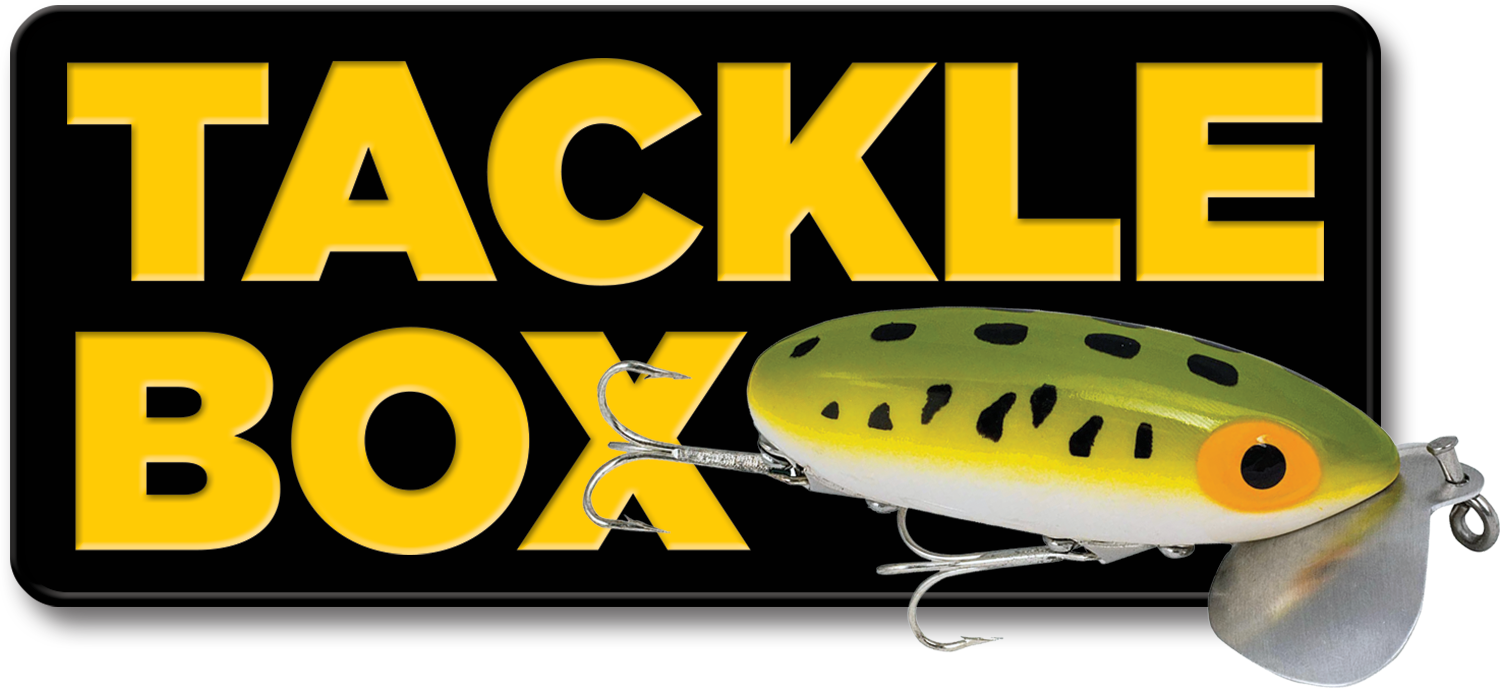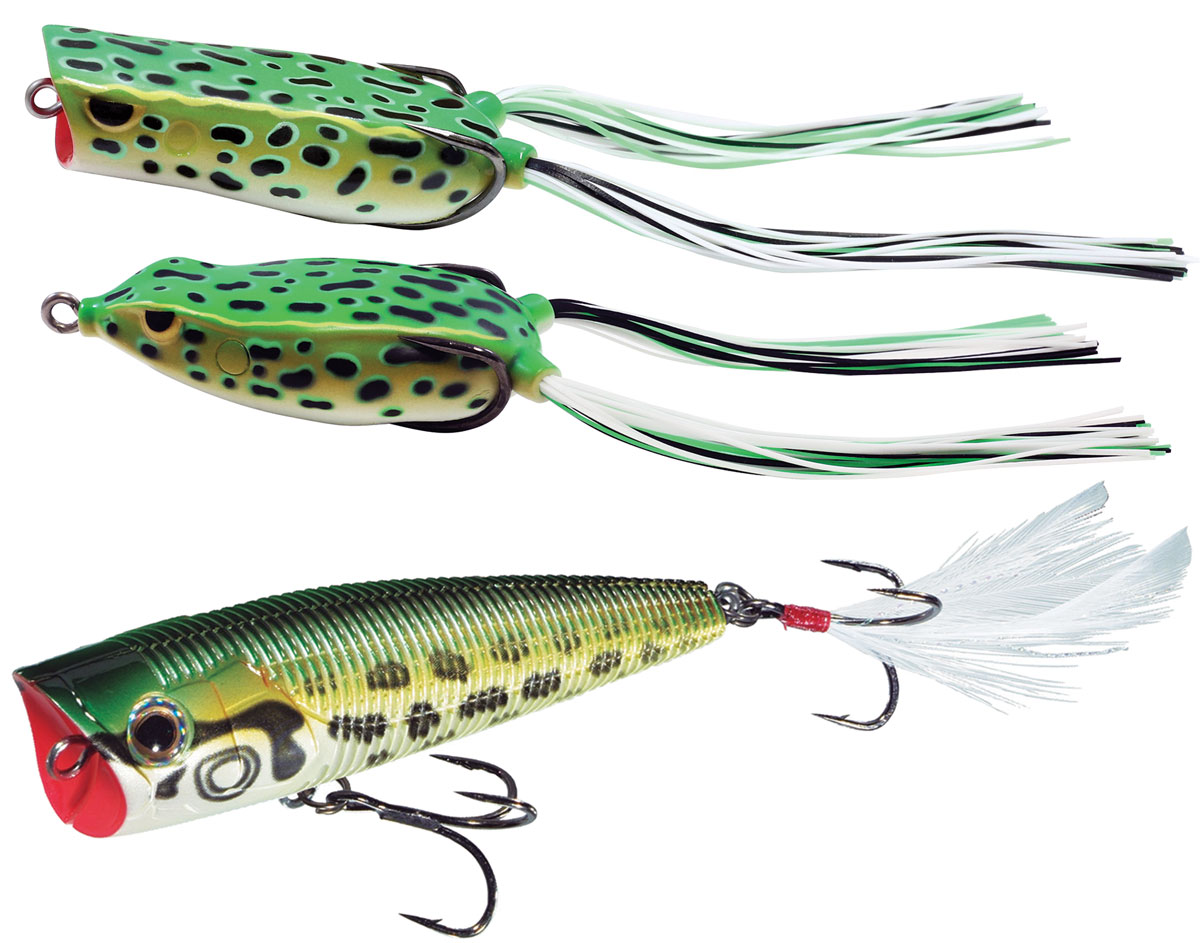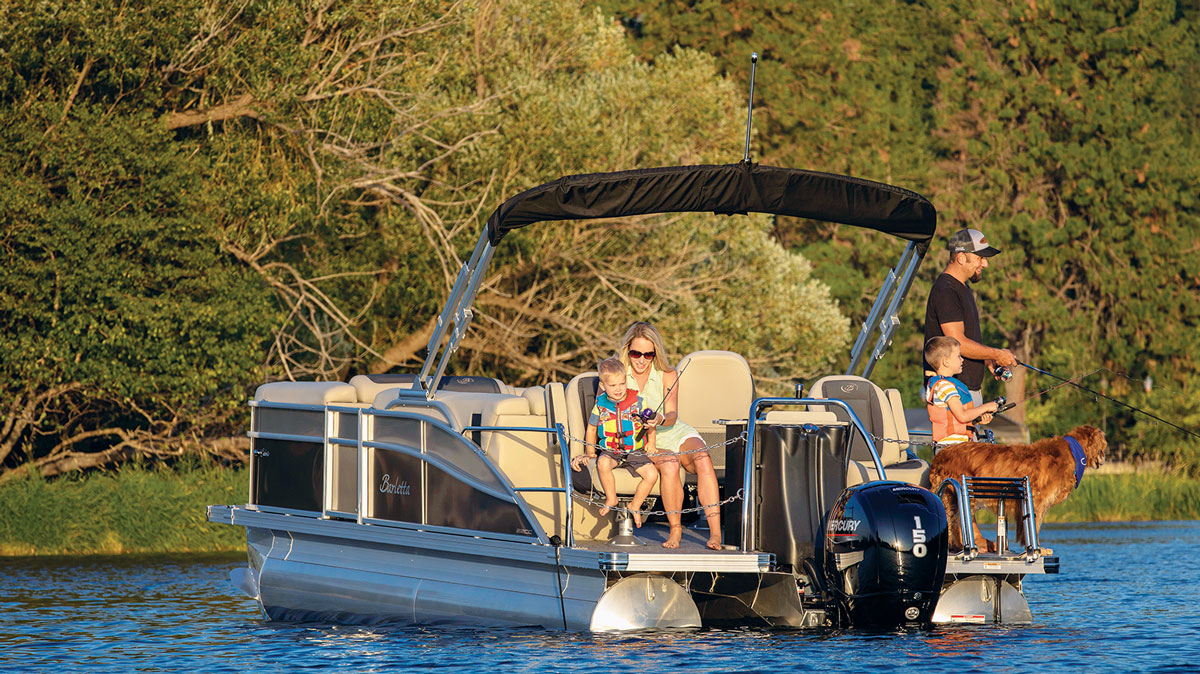
When the “dragonflies are buzzing” bass start looking skyward for food, according to Northland Tackle pro Travis Peterson. As in many waters across North America this time of year, the dragonfly hatch is underway, frogs thrive and weeds are reaching their peak growth in his home waters of Minnesota. Where lakes vary from moderately fertile mesotrophic to more lived-in, weedier eutrophic varieties, the emergent vegetation is infused with largemouth bass. To catch them, Peterson fishes fake frogs in conventional lily pad fields, as well as wild rice, bullrushes and reeds. Faux frogs elicit explosions in shallower coontail and milfoil as well, places where the angler concentrates his surface presentations atop waters four feet or less in depth in late summer.
Within these jungles, he focuses energy on “anything different.” In pads, that means pockets and places where submerged vegetation comingles with the surface weeds. He never passes on clumps of mixed weed types. Dense clusters of pads often produce, too.
The pro prefers a popping style surface plug in sparser weeds to call bass from afar, as well as in reeds and rushes. When bass are walled-up in impenetrable cattails, Peterson throws tight to the edge and creates a scene they simply must swim out and investigate.
But effective frogging is much more than chunking it out and giving it the heave-ho on a blow up, Peterson explains.
“Don’t be in a big hurry to set the hook. You’ll miss a lot of them. I make long casts, keeping the rod tip up at about 11 o’clock once the bait hits the water. This forces you to pause, leaving the fish a little slack line to work with. Then I drop the rod tip, point it at the fish, give the reel two or three cranks, set hard, and lean back and reel.” Done properly, he adds, you’ll keep the fish from burrowing in the weeds, and hopefully, popping it to the surface.
Before putting the pins to ‘em, Peterson coaxes bass to participate in the immortal explosion. “In dense vegetation, I use a steady retrieve back to the boat,” he explains. “I’ll slow it down over likely strike zones, like pockets and thick spots, and porpoise the bait in clearings where I’m sure there’s a fish.”

If a fish swirls and shrugs it off or totally misses, Peterson rinses and repeats, throwing right back at it. If he’s convinced the fish is still there but not fully committing to the frog, he goes to a jig and plastic combo as the preferred throwback presentation.
Peterson’s frogging gear is no nonsense. He spools a preferred baitcaster reel with 50- to 65-pound braid and ties direct. His rods are 7.5- to 8-foot medium-heavy and heavy.
Yamaha Pro Dean Rojas breaks out the hollow-body surface fakes late each season as well, especially once waters start to cool. He actually helped design a Best of Show award at the annual national fishing tackle show known as ICAST for his faux frog.
But his wasn’t the first. The hollow body lures, which feature a double hook design and collapse when a bass strikes, originated on Lake Guntersville in northern Alabama more than 40 years ago where they were initially designed for fishing over the lake’s heavy, matted milfoil beds. Rojas discovered them nearly two decades ago, and immediately started improving the lure’s basic design to make them more versatile.
“Although I have a frog tied on and ready to cast every day of the year,” the Arizona-based pro says, “autumn is probably my favorite time because this is when the bass are normally feeding more actively than at any other time. They’re in shallow water chasing shad, and while a frog does not really imitate a baitfish, the bass still hit it readily on the surface.
“It’s just a fun time to fish, because if you can find a school of bass that is feeding, they’ll hit a frog on every cast you make.”

The pro’s choice of frogs is a popping frog featuring a concave face that pushes water and creates a lot of commotion, something bass seem to prefer in the fall months. His favorite targets include flooded bushes, boat docks, rock piles, and scattered vegetation, all in water less than 10 feet deep.
“The only thing I do differently in the fall is slow down my retrieve, which is easy to do because a popping frog does not move forward very far each time I twitch my rod,” adds Rojas. “I can keep the lure in the strike zone longer so the bass have more time to look at it. Because the water is cooling, I usually limit my frog fishing to the afternoon hours when the temperature has warmed the water, but bass will certainly hit in the morning, as well.
“I really try to locate schools of fish, which isn’t that hard to do in the fall because the bass pushing schools of baitfish to the surface start feeding in a frenzy. You can see the water being churned up, and all you have to do is make a cast into the middle of it. I look in coves and in the backs of tributaries most of the time, but it also happens in open water. You can find feeding activity by watching gulls, too, because they’ll be diving on the trapped baitfish from above while the bass are attacking from below.”
Rojas’ rig is even beefier than Peterson’s; he uses 80-pound braided line for all his frog fishing, along with a medium-heavy action seven foot rod and a fast 7.1:1 reel that gives him instant control when a bass strikes. It’s a combination he recommends for all frog fishermen who hope to separate bucket-mouths from the salad.


I can’t imagine a more comfortable platform from which to pitch fake frogs than this Cast N Cruise model from Barletta – except perhaps its 24-footer. But this C22 is perfect for several anglers and their friends, from the full deck woven marine flooring underfoot to a helm with standard features that include a mid-back, reclining helm seat with swivel/slide, Hook 4 fish finder (optional Simrad 7-inch GO7 XSE Chartplotter/Multifunction Display available), integrated cell phone holder with charging stations and AUX and (this standard feature is a first for me) an integrated pet food/water dish! Other “creature comforts” and angling amenities include an integrated waste basket, stow-away table and storage in port chaise seat, a pair of captain’s chairs on the stern, a fish center w/tackle trays, rod storage and best-in-class large, aerated livewell.
Exterior options available with the Cabrio C22 include a lighting package (white underdeck and underwater), stainless steel flag holder with USA Flag and a tube/ski/tow watersports bar. So, if you bag your limit or just want to cruise to cool down, for quality and comfort, the Cabrio is the ticket.
- Beam:8’ 6”
- Deck Length:23’ 2”
- Tube Length:22’ 3”
- Weight:2,572 lbs.
- Max Horsepower:150hp
- Max Weight:2,066 lbs.
- Passenger Capacity:10
- Fuel Capacity:24 gals.
www.barlettapontoonboats.com